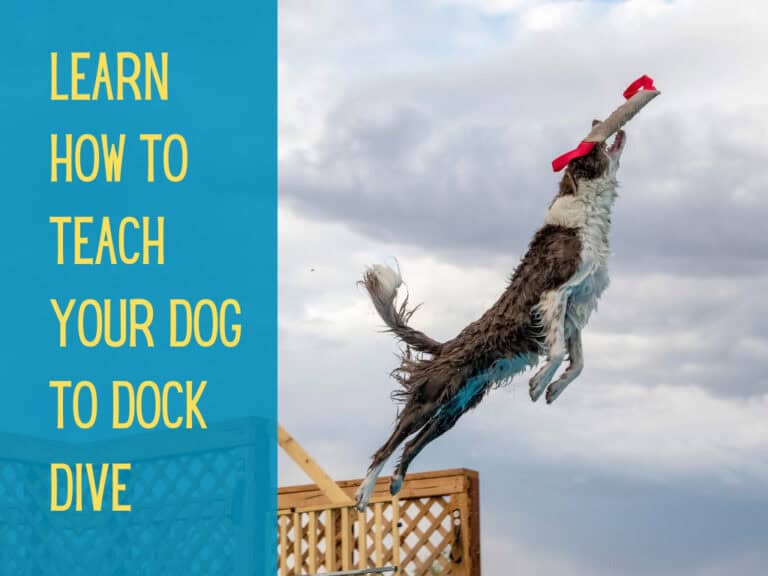How to Train a Dog to Walk on a Treadmill: 4 Easy Steps

Meraki Dogs may earn a small commission when you buy through links on this site at no cost to you. See our disclaimer here.
So you’ve decided to expand your horizons and teach your dog to use a treadmill. That’s a great idea, as treadmill training has many benefits beyond your location.
The best part? It’s actually really easy to treadmill train a dog if you follow the instructions I’ve included in this blog post.
Let’s dive into this unique exercise method and discover how to train a dog to walk on a treadmill in a fun and rewarding way for you and your pup.
Benefits of Treadmill Training
Training your dog to walk on a treadmill comes with a plethora of advantages:
- Great indoor mental and physical stimulation during unfavorable weather conditions such as snow, rain, ice, or extreme heat.
- Serves as an additional exercise outlet for those dogs bursting with energy.
- Tool for conditioning and weight loss.
- Rehabilitation tool for dogs recovering from injuries or undergoing physical therapy.
- If you’re training a severely reactive dog, a treadmill can be a safer alternative to public walks while you work through the dog’s triggers.
- It is a supplemental way to exercise your dog for dog sports and dog shows.
Treadmills provide dogs with a controlled and efficient exercise environment. Ensure the treadmill is appropriate for your dog’s size to ensure their safety and comfort.
Can dogs use human treadmills?
Small dogs can use human treadmills. However, dog treadmills are recommended for medium to large breeds because human treadmills have shorter tracks that might not comfortably accommodate their stride.
How to Train a Dog to Walk on a Treadmill
Not sure how to get started? Check out the steps below to get started the right way!
- Build a positive relationship with the treadmill
- Introduce the treadmill’s movement and sound
- First steps on the treadmill
- Introduce distance and speed
Follow these simple steps to teach your dog to use the treadmill.
1. Build a Positive Relationship with the Treadmill
Before diving into the training, establish a positive relationship between your dog and the treadmill.
Start with turning the treadmill off and generously rewarding your dog with treats just for being near it. As they become more familiar, you can up the ante by offering high-value treats when they approach or bravely stand on the treadmill.
Some dogs might initially be wary of the treadmill, so don’t be disheartened if it takes a few sessions to build their confidence in standing on it.
Take it a step further and encourage your dog to get on the treadmill (turned off). A handy technique here is to feed them treats while on the treadmill. This method effectively reinforces being on the treadmill as a rewarding experience. When your dog is comfortable standing on the treadmill, proceed to the next step.
2. Introduce the Treadmill’s Movement and Sound
Now it’s time to introduce them to the treadmill’s sound and movement. You can start by turning on the treadmill with your dog near (not on) it. This initial exposure allows them to familiarize themselves with the noise without feeling overwhelmed.
As the treadmill runs, stand beside it and offer your dog treats while closely observing their reactions. If your dog gets nervous, continue to reward them until they seem less concerned with the sounds.
The continuous positive association will help them link the treadmill’s sound with rewards. You’ll know it’s time to move forward with the training when you notice your dog displaying genuine curiosity and remaining unfazed by the treadmill’s operation.

3. First Steps on the Treadmill
Method 1: Begin by setting the treadmill to its lowest speed and enticing your dog to come onto the treadmill with their favorite treats. As they muster the courage to take those initial steps, become their cheerleader and shower them with praise and rewards from the front of the treadmill, like the photo shown above.
Method 2: Have your dog stand on the treadmill first, then start it. As they begin to walk, maintain the flow of treats to help them acclimate to the movement and keep them from jumping ship.
Keep the first few sessions short, spanning just a couple of minutes—these first sessions are all about teaching, not getting real exercise in. As your dog grows more comfortable, you can incrementally increase the speed to align with their natural stride, ensuring they have a smooth and enjoyable experience.
If this step proves challenging and your dog needs to adjust after multiple sessions, it might be beneficial to seek the expertise of a professional dog trainer. There’s no shame in seeking professional guidance; some dogs require more assistance and specialized techniques, and many dog training experts have experience training dogs to walk on a treadmill.

4. Introduce Distance and Speed
As your dog’s confidence on the treadmill grows, you can introduce more advanced challenges, like building distance and speed – though these should first be built upon separately while your dog learns.
Like humans, dogs require time to develop stamina, so be patient and don’t rush the process.
For dogs that tend to be less active or carry a few extra pounds, consider gradually extending the session duration, adding 2-5 minutes every couple of sessions. If your dog is athletic and already leads an active lifestyle, it might be ready to advance more briskly and quickly adapt to the increased treadmill challenges.
How long does it take a dog to walk on a treadmill?
The time it takes for a dog to adapt to walking on a treadmill depends on their confidence level. Some dogs may adjust swiftly, while others need longer. It’s essential to move at your dog’s comfort level and pace.
Tips for Successful Treadmill Training
- Patience is key. Every dog is unique, and their learning pace will vary.
- Always supervise your dog on the treadmill.
- Incorporate warm-up and cool-down periods for intense workouts.
- You can use a leash to help your dog stay on the treadmill, but always be attentive and ready to help if needed.
Conclusion
Learning how to train a dog to walk on a treadmill is a fantastic way to ensure they get their daily dose of exercise, regardless of the weather or your busy schedule. It’s a process that demands patience and a gradual introduction, but the rewards are well worth it.
Not only does it provide a great outlet for your dog’s energy, but it also adds a fun and enriching activity to their routine. Remember to always keep a watchful eye on your dog and never rush through the process.
As you progress, celebrate each step forward and enjoy the unique bonding experience it offers. You’re not just promoting physical fitness; you’re opening the door to a happier, healthier lifestyle for your dog.
Interested in discovering more innovative training techniques and tips for keeping your dog active and engaged? Join my vibrant community of dog enthusiasts. Subscribe to my newsletter for expert advice, actionable insights, and the latest trends in dog care and wellness.
Join the Pack!
Sign up for my newsletter and fetch the latest tips, tricks, and industry insights straight to your inbox!






